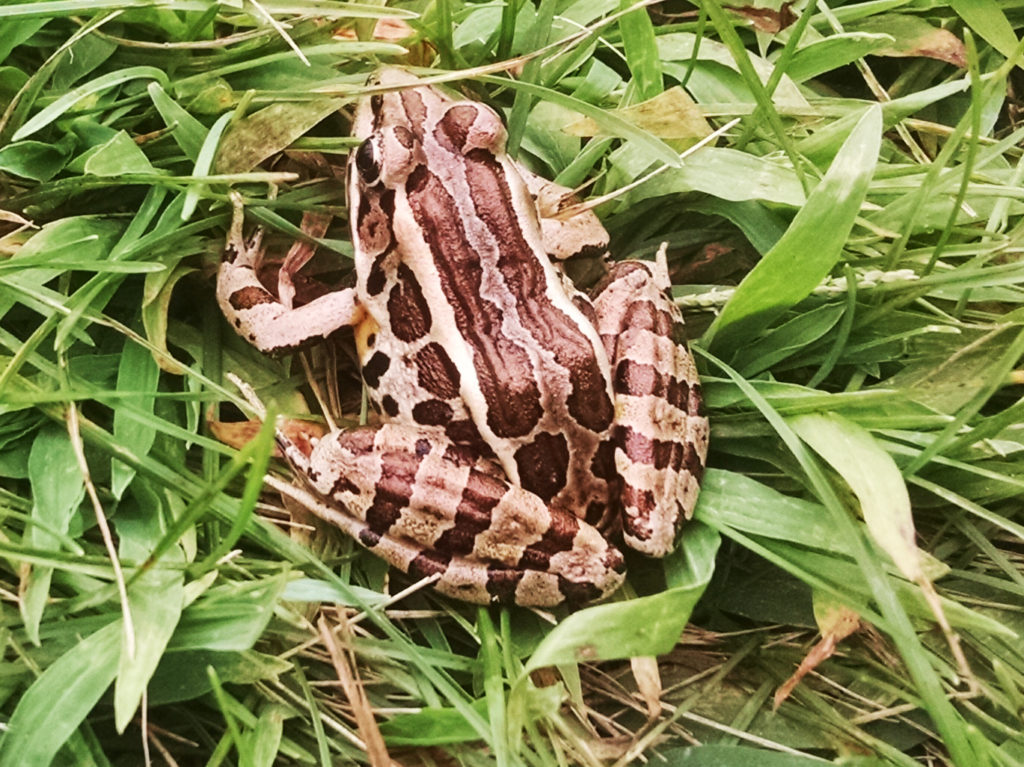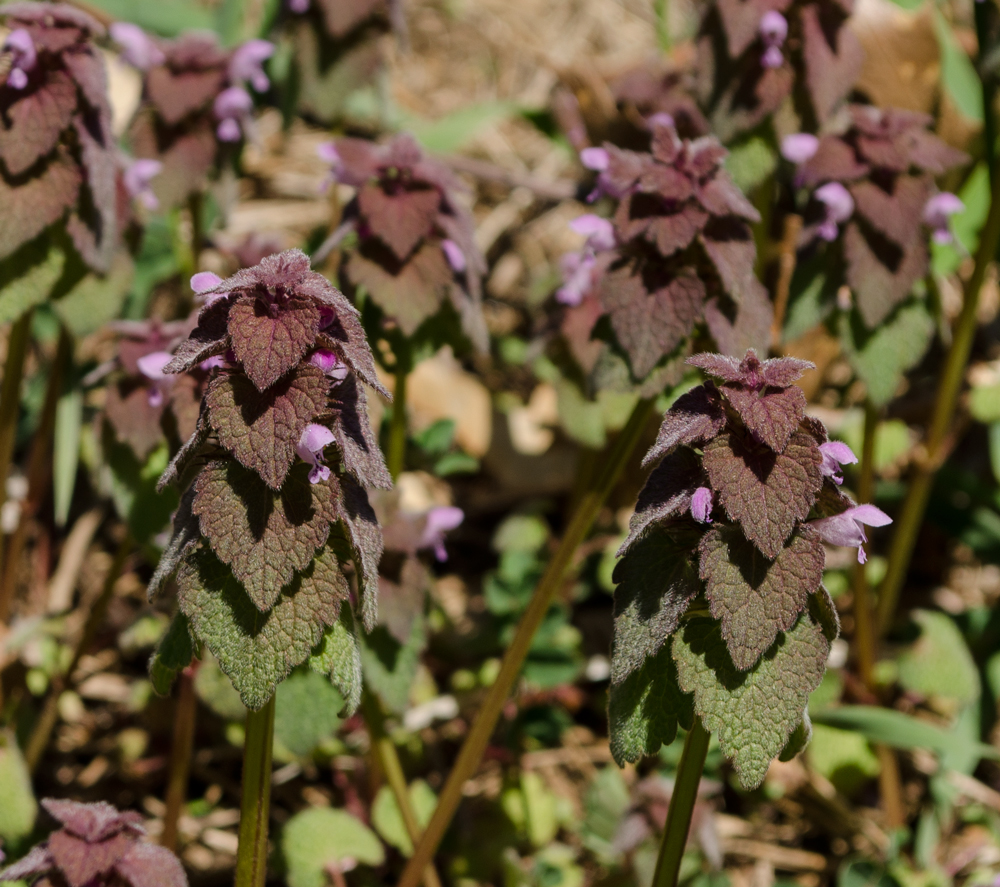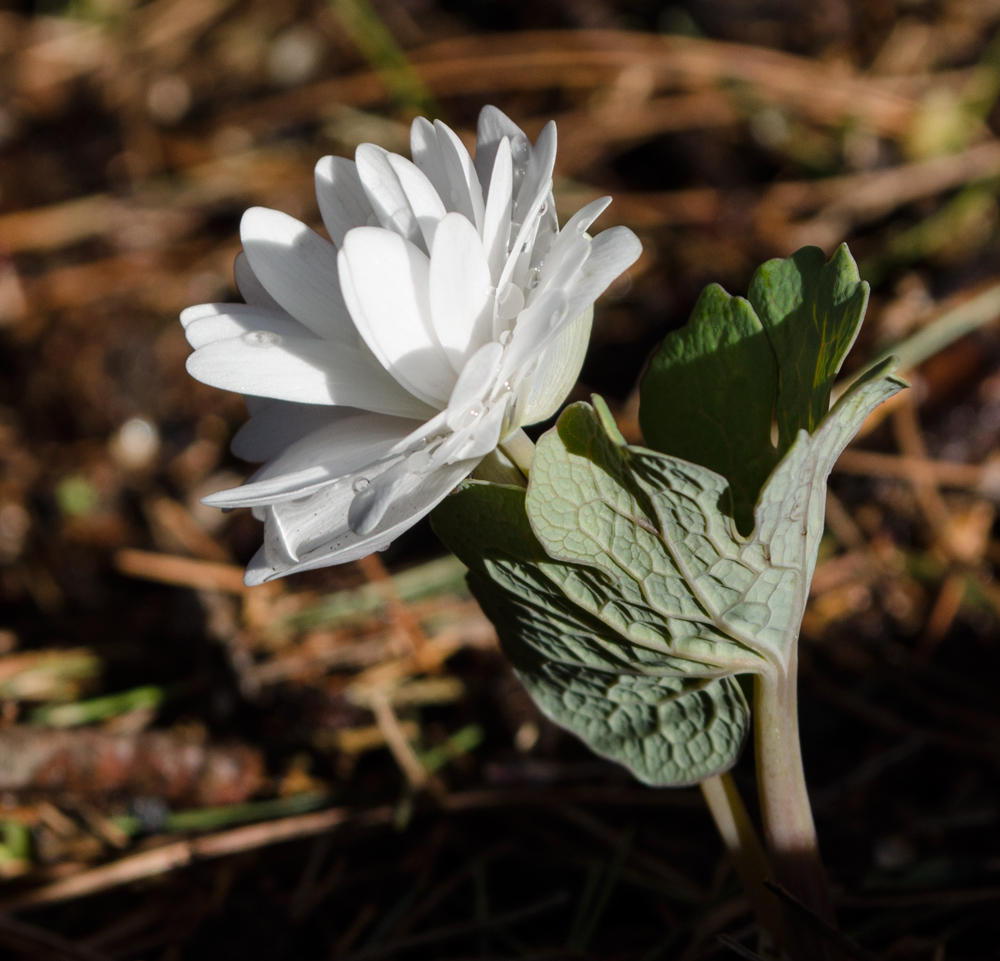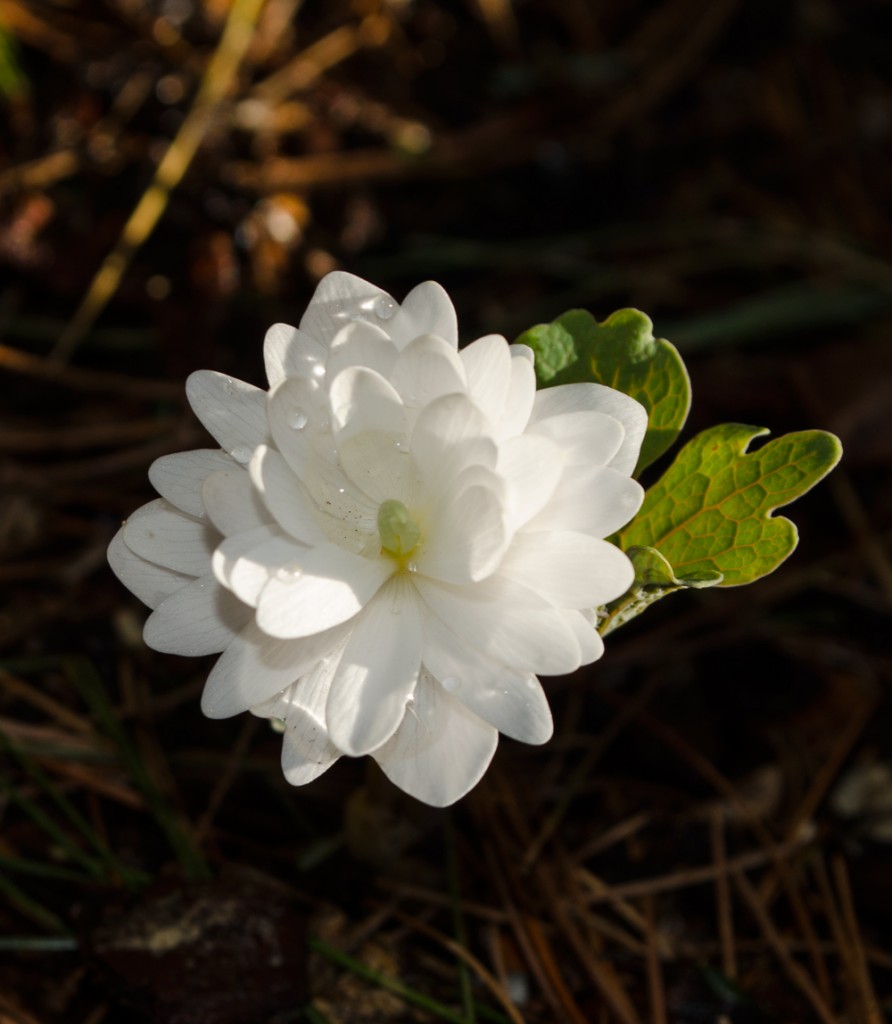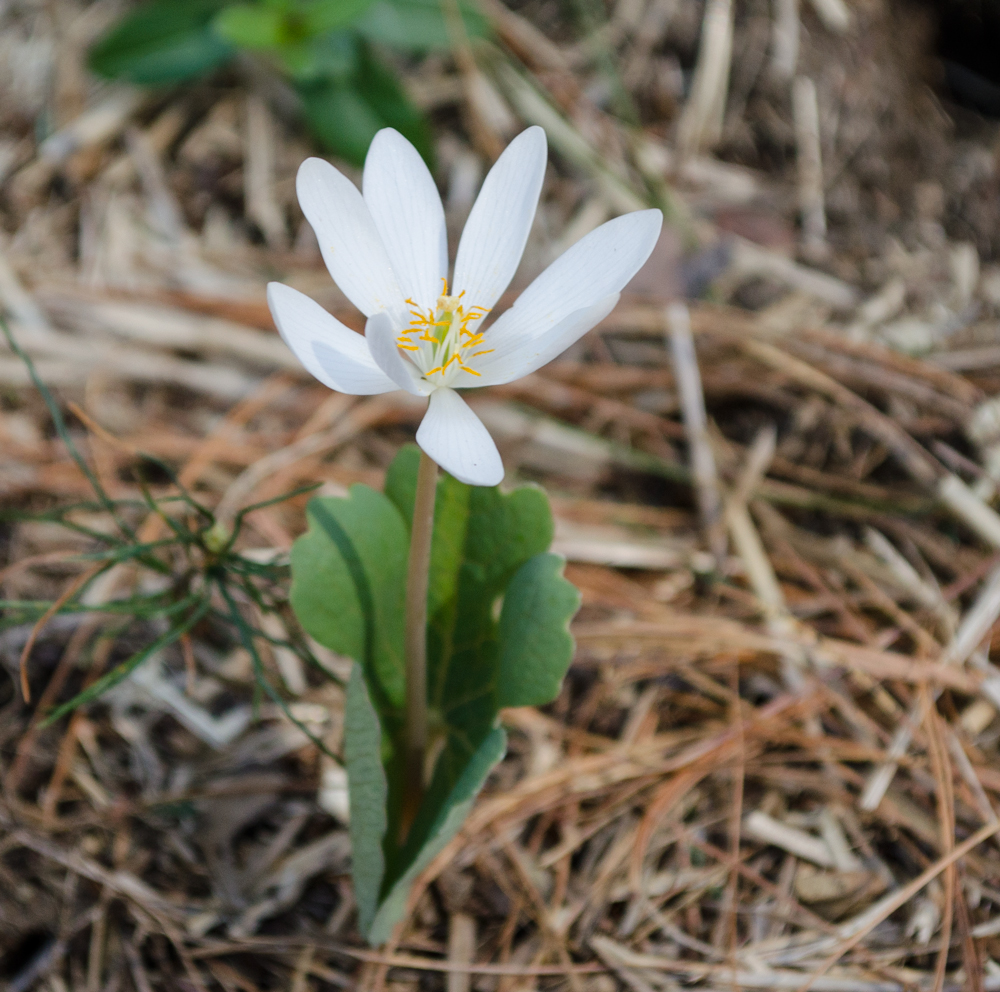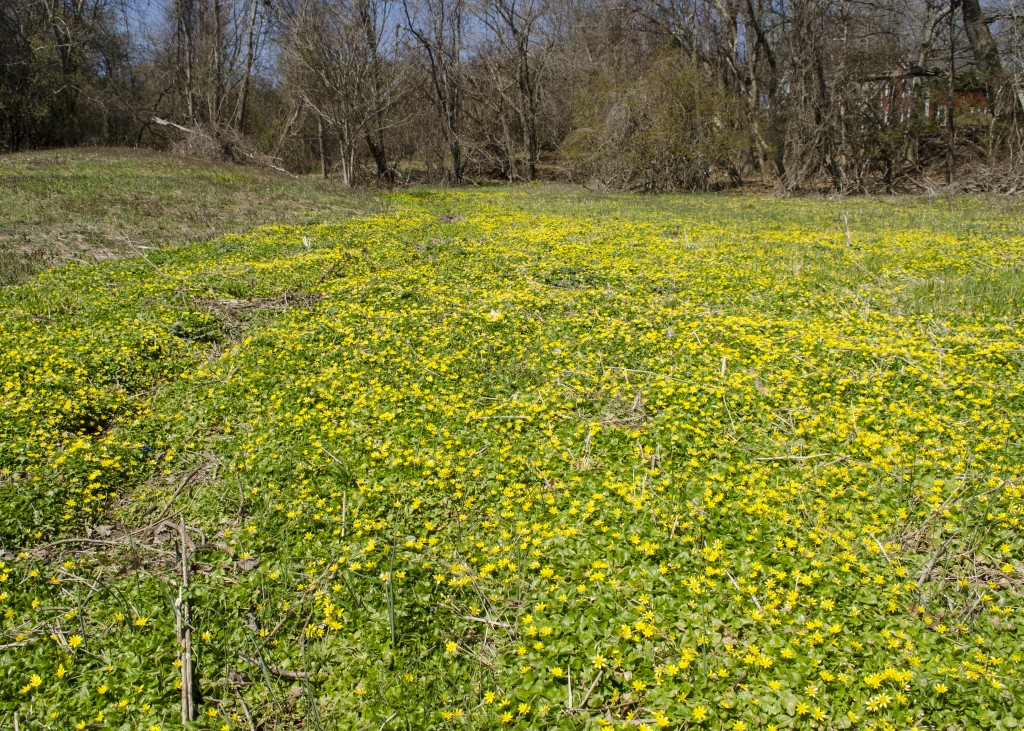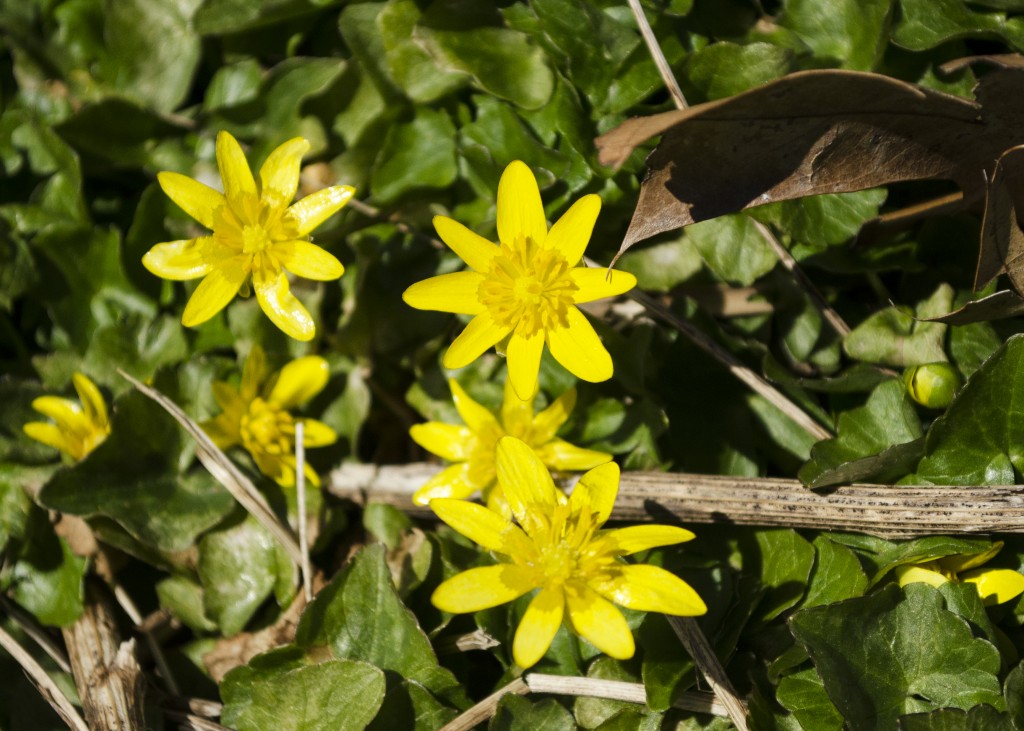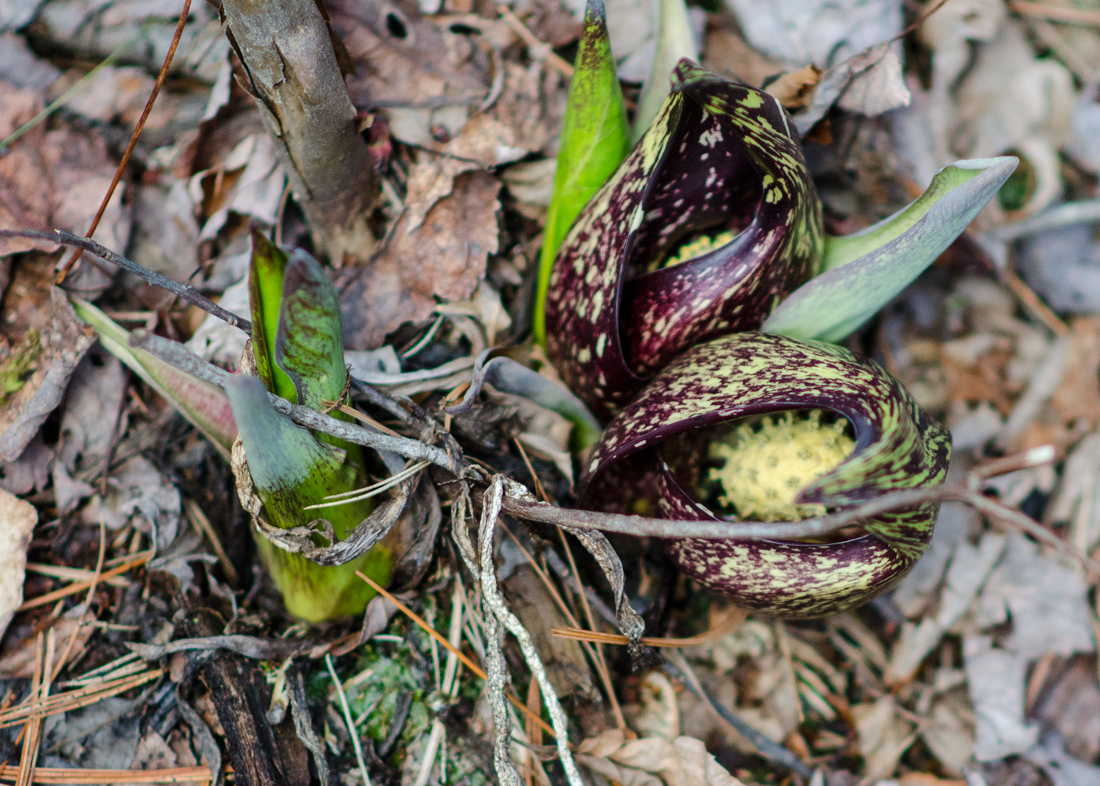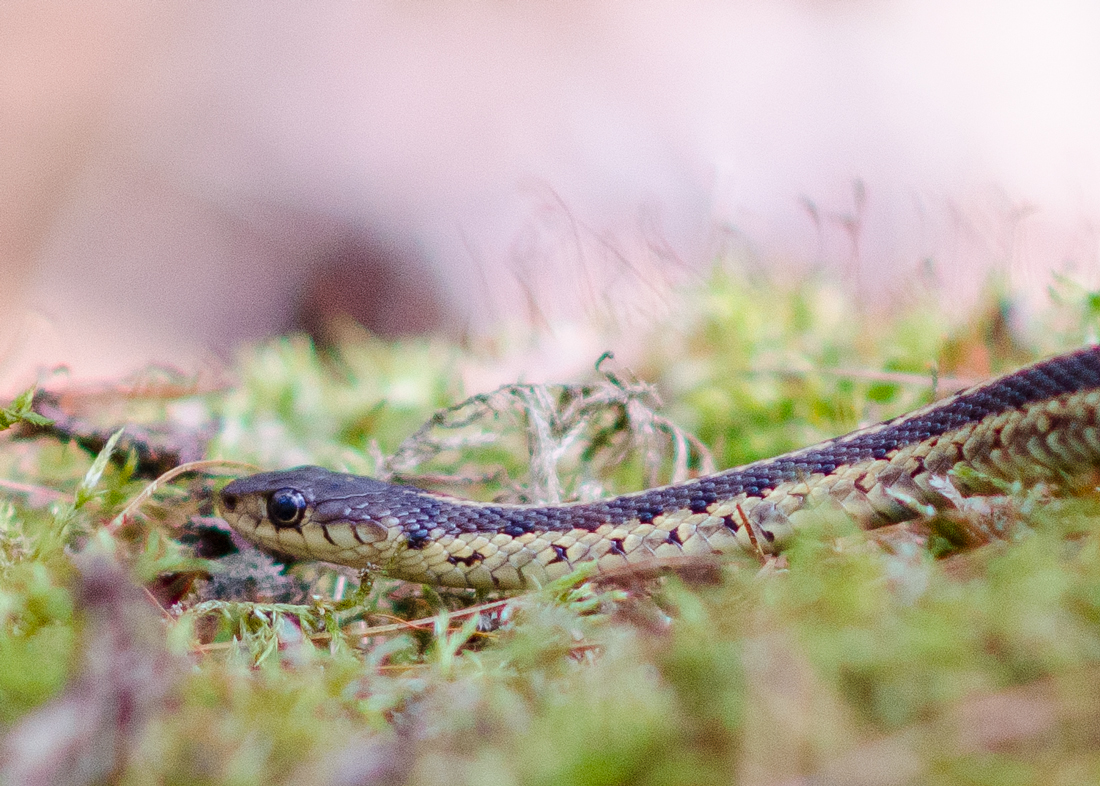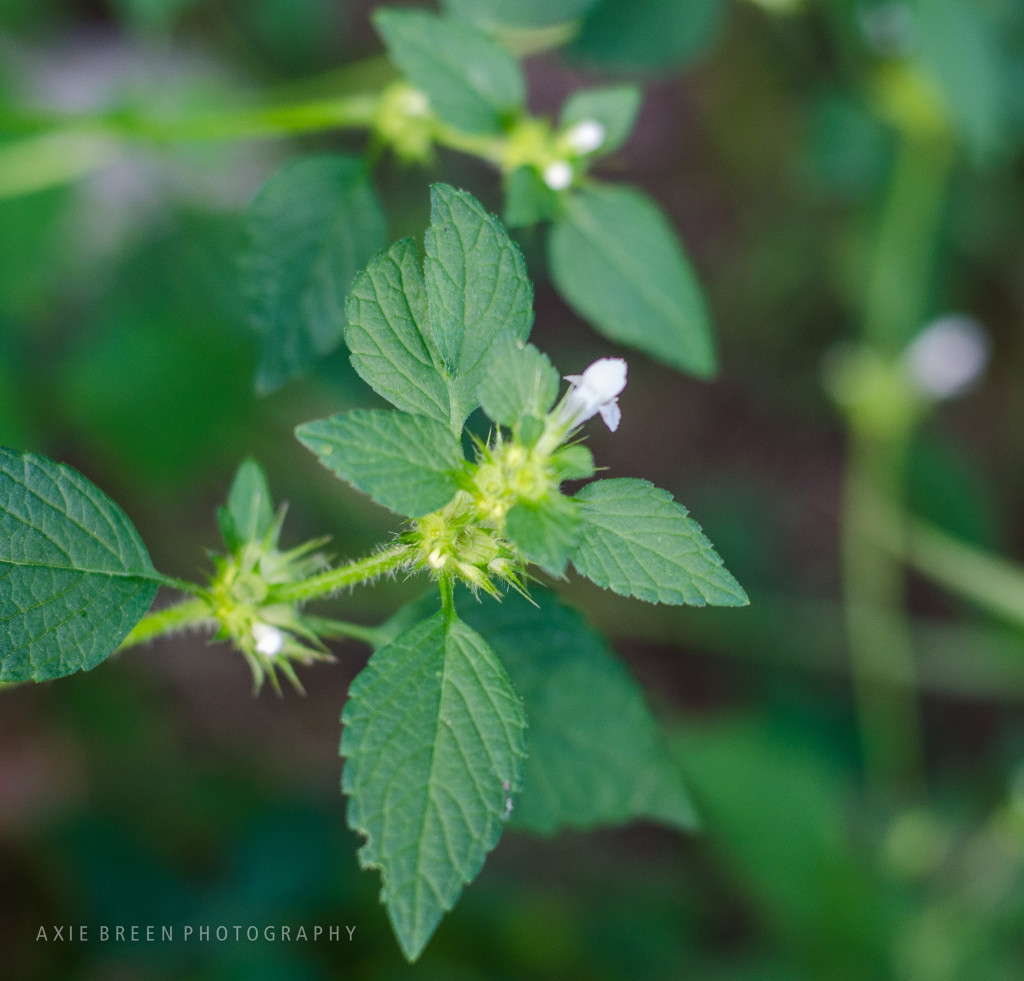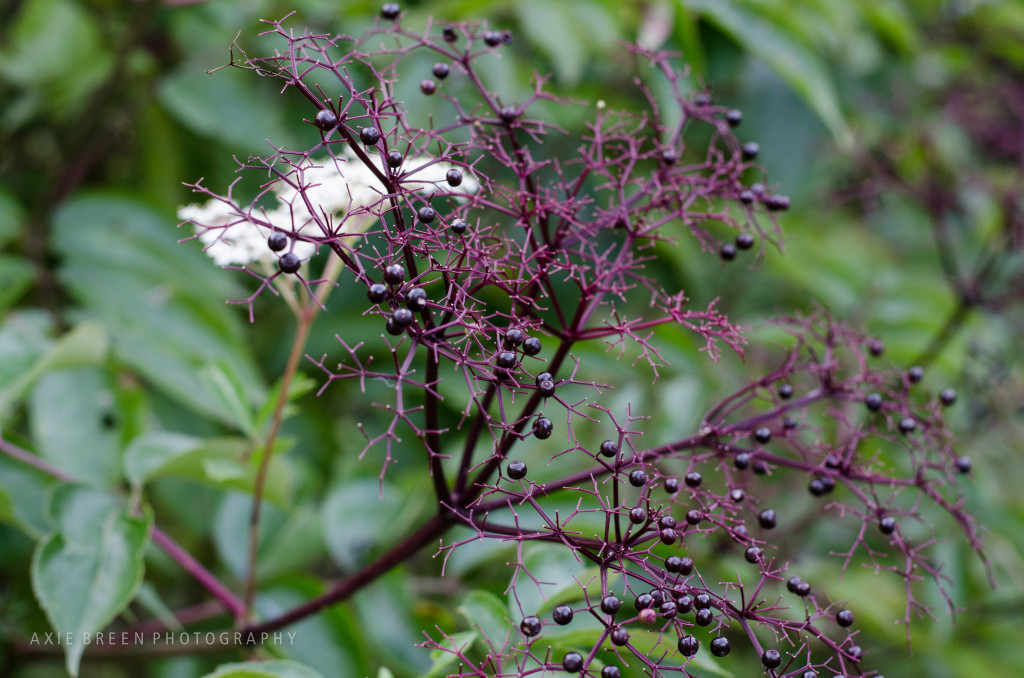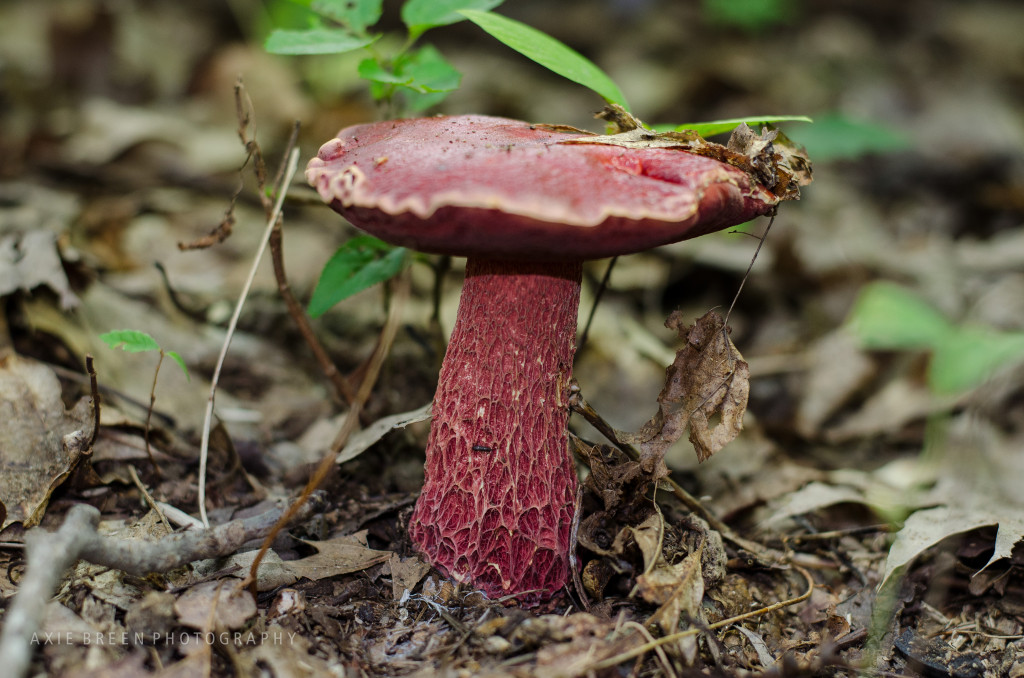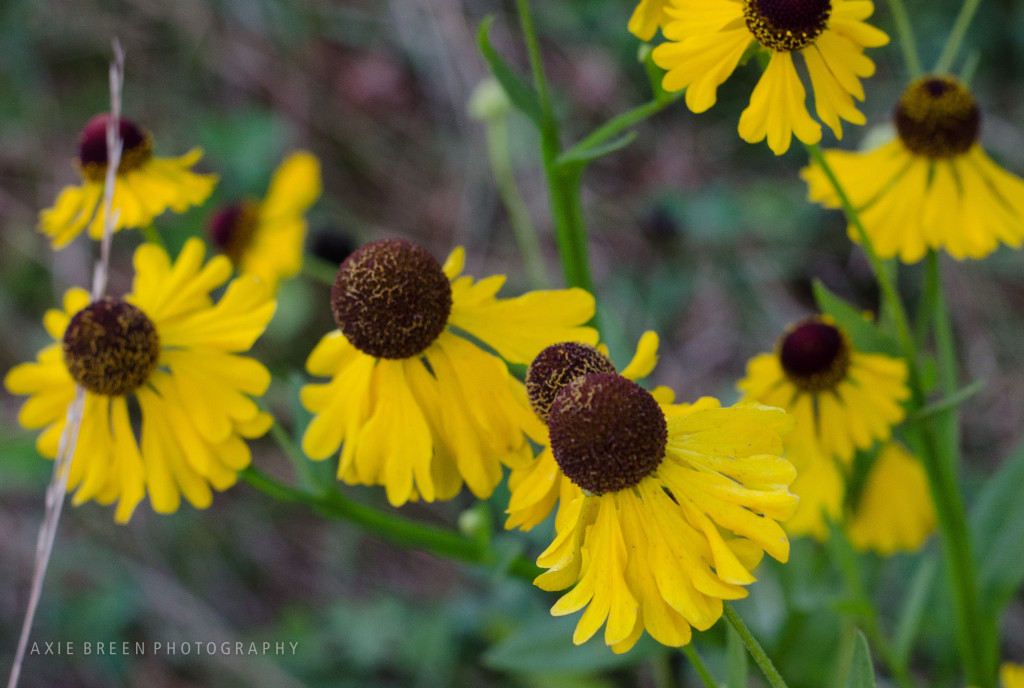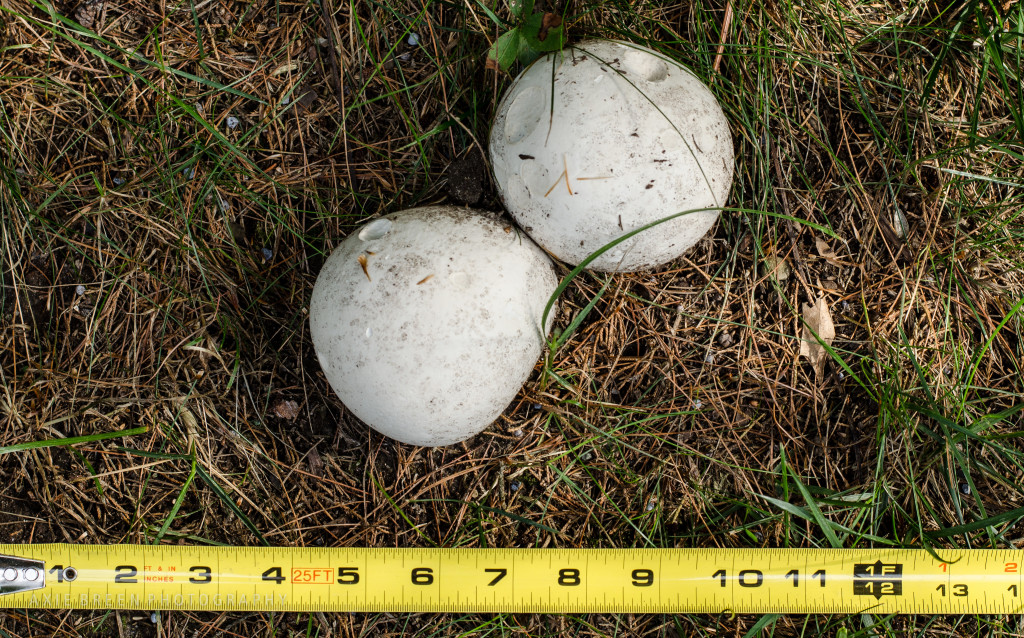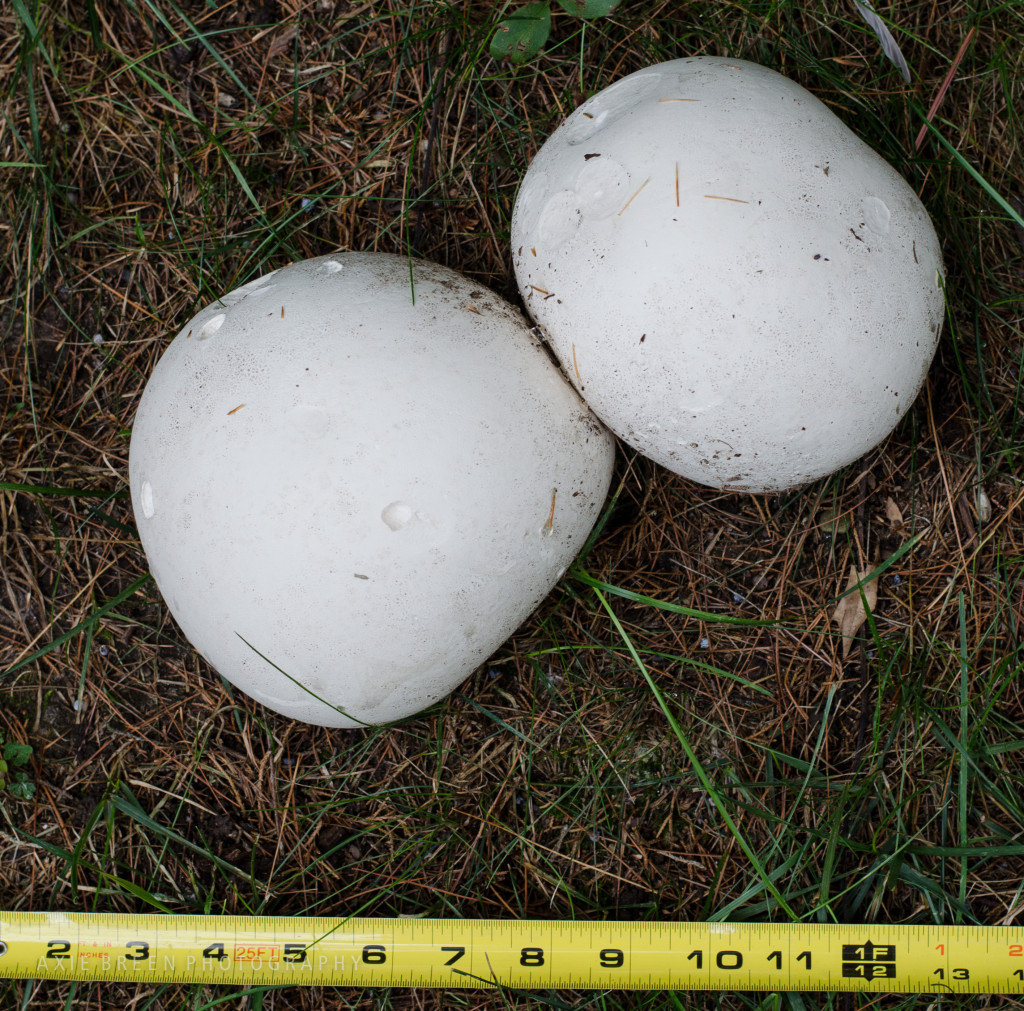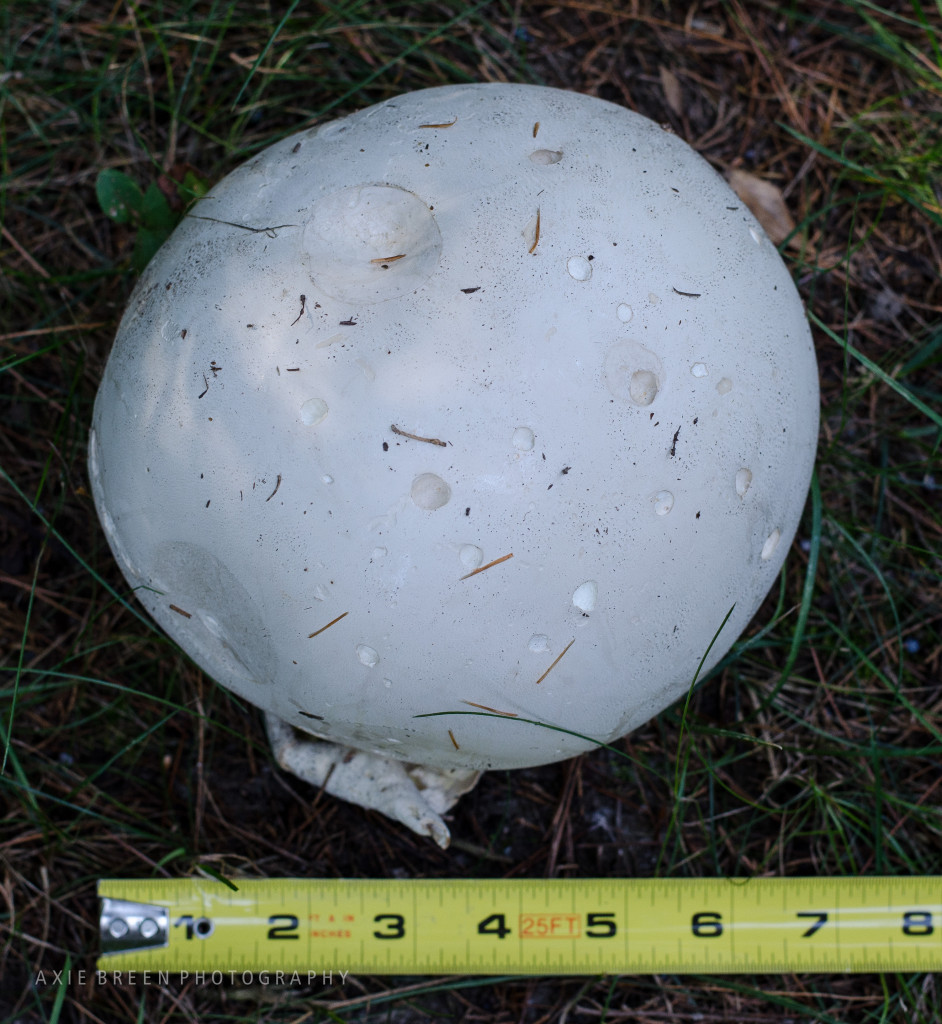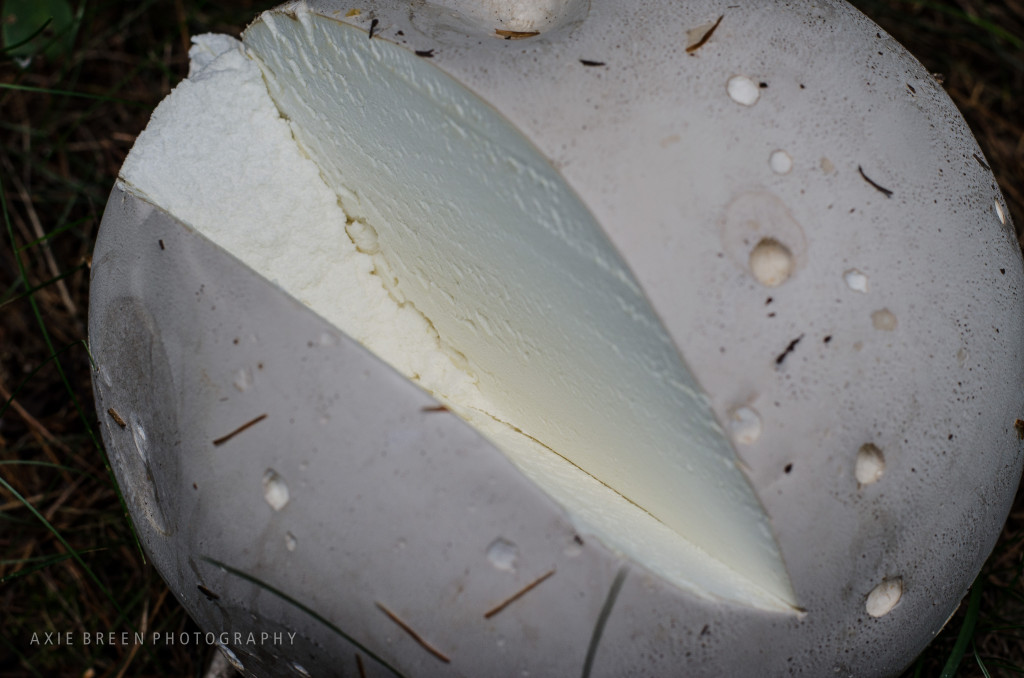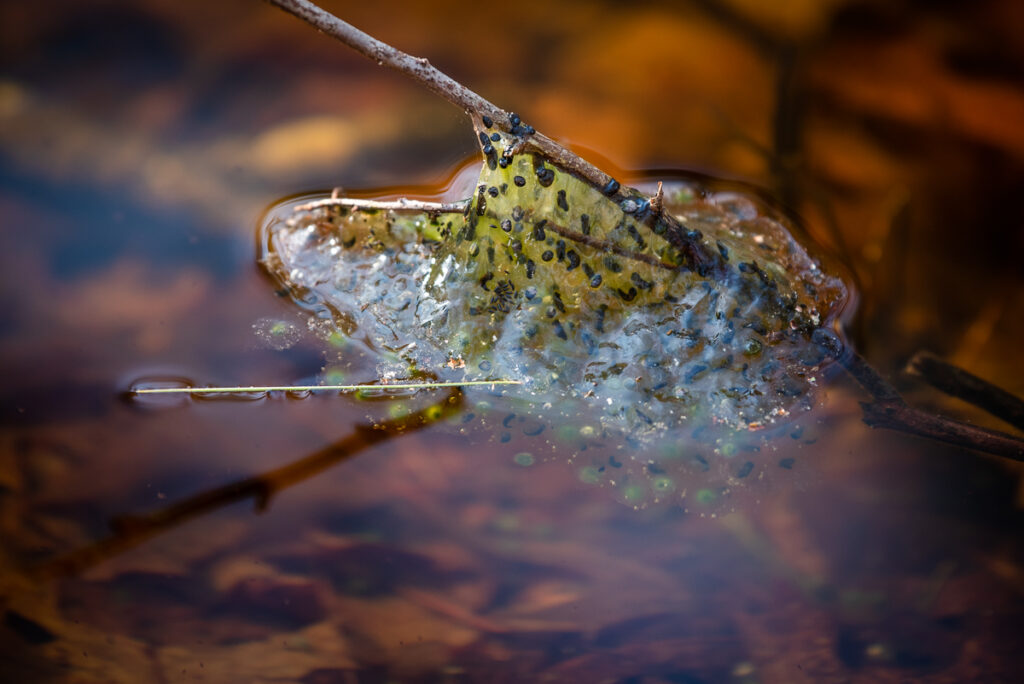
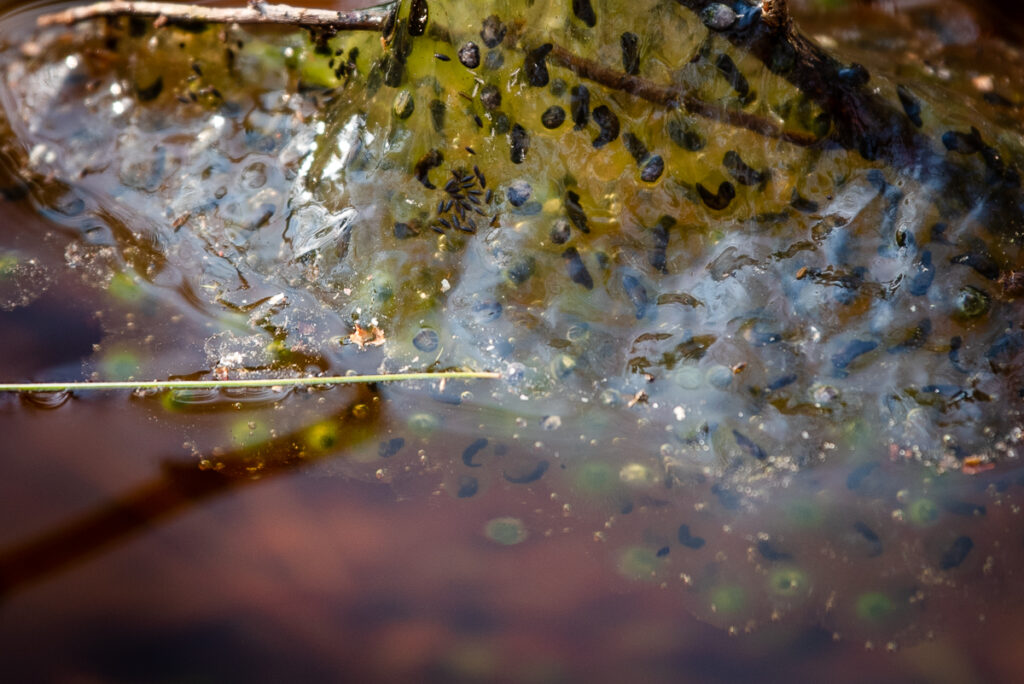
Even before the wildflowers get going, the peepers and wood frogs announce spring. (Wood frogs sound like ducks, or a bunch of loose banjo strings.) Usually I just listen… but this year I went on a vernal pool walk with a naturalist in Dover (organized by the Dover Open Space Committee).
I just loved having things pointed out to me that I have never noticed before, like gelatinous floating egg masses shimmering there on top of the water (eggs of wood frogs) and silvery translucent submerged masses (eggs of spotted salamanders).
So today I went looking in Needham for some egg clusters and I tell you, I did a lot of tromping with no luck, but did find this one and it’s pretty good. Before I would have thought it was just some algae/vegetation caught on that branch, but in the closeup you can see it’s a bunch of gelatinous ova containing black embryos, and some have turned into tiny tadpoles. (I’m pretty sure these are wood frog eggs, but let me know if not.) The egg mass is green with symbiotic algae; the babies stay with the egg mass feeding on the algae for a few days before dispersing into the pool.
Below is a phone shot I took on the vernal pools walk — wood frog eggs earlier in the cycle than my green shots above — newly laid, no one has hatched, and it hasn’t been colonized by algae. Vernal pools are temporary shallow pools that dry up after a couple of months– because of that, fish can’t live in them, and because of THAT, all kind of amphibians can lay their eggs in them without them being eaten by fish.
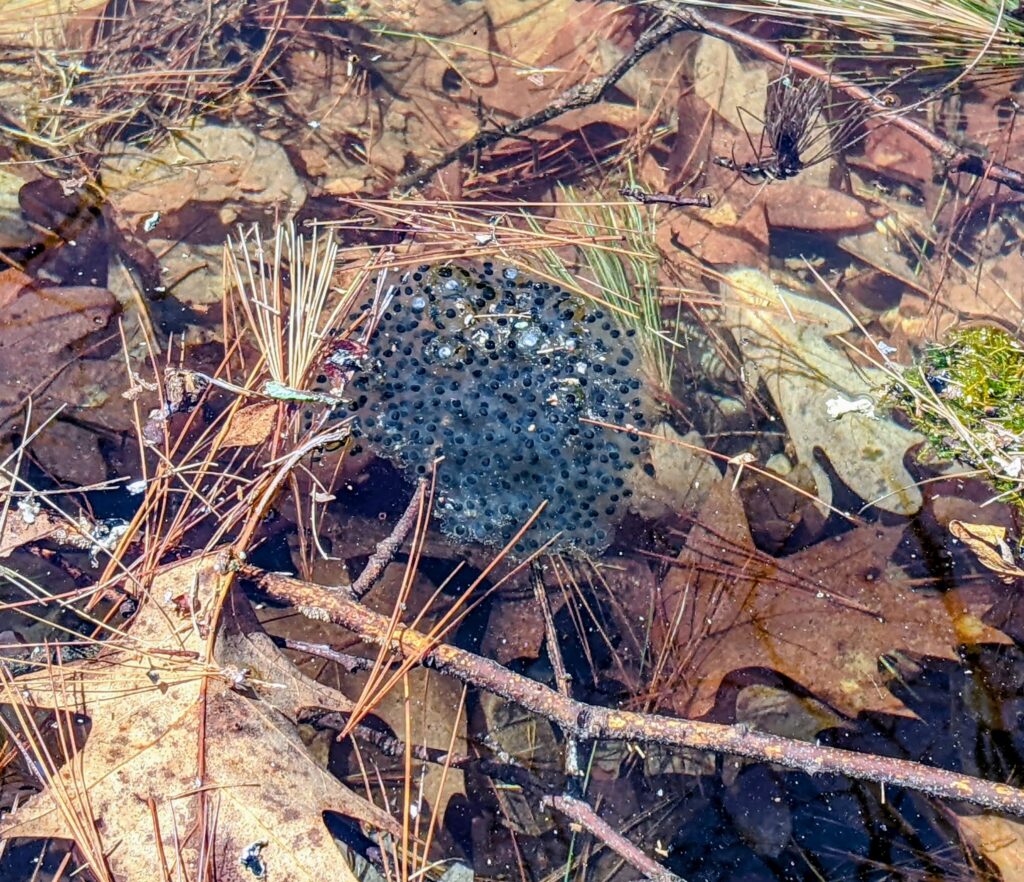
Wood frog (Rana sylvatica)

